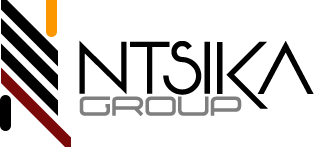With the world still gripped by the struggle with the COVID-19 pandemic, companies and organisations have been forced into a situation whereby staff are being expected, where they can, to work remotely. The acceleration of this work-from-home motion has not given IT security management the opportunity to be best prepared for this.
Never could anyone have predicted this pandemic, nor the amount of people forced to work from home.
CISOs, IT managers and CEOs had to act fast in order to secure their infrastructure and allow remote access for their companies to remain safe and maintain productivity.
As we work from home and log onto our work platforms through our own or work devices, staff have been subjected to daily struggles to logon to the VPN, and in more cases, not being able to connect yet. Frustratingly, in most instances, communications from IT department and departmental heads keep mentioning that “we are tightening the security measures”.
“We have been able to provide our customers with the support they need to ensure they have secure remote access throughout COVID-19. Our solutions can be installed very quickly thanks to their simplicity and efficiency, which proved invaluable during the pandemic; we regularly managed to deploy our MFA within a day, subject to volume of users. Having been established within the identity and access management sector for the last five years, we have high calibre customers including government, healthcare and other IT companies across the globe. Given the current climate, we strive to ensure that all new and existing customers can keep their IT infrastructure safe and secure when logging in, wherever they are working from,” says Steven Hope, Authlogics CEO.
Staff using their own devices will store more apps and data on a personal piece of IT equipment, exposing themselves to more risk and being more susceptible to phishing attacks and credential stuffing.
How do you ensure your company is safe when your staff are working from home?
It all starts with everyone logging on and what they do to gain access to internal systems and prove their identity – typically, they use a password. This information is one of the biggest assets to a cyber criminal and optimises their opportunities to access your IT infrastructure. Passwords need to be managed properly and password policies need to be updated.
Compliance is key for many industries and Authlogics Password Breach Database holds a large compilation of over 2 billion credentials that have been previously breached. These include over 520 million unique clear text passwords. The database ensures Authlogics customers do not use previously breached passwords, helps them comply with current industry best practices and prevents unnecessary attacks.
Is my organisation safe from being hacked?
A password is one form of security to protect your data; however, you can also add extra layers of authentication to give hackers a brick wall to break down rather than a wooden fence. Multi-factor authentication can be implemented in addition to, or in place of, passwords. If your MFA doesn’t replace passwords, then password security is still very important and should not be overlooked.
“Employees using their own devices will store more apps and data on a personal piece of IT equipment, exposing themselves to more risk and being more susceptible to phishing attacks and credential stuffing. With the high volume of fake news e-mails surfacing around COVID-19 and an increased demand for socialising online, no doubt employees have been intrigued or are using different platforms to connect with both colleagues and family. These avenues are proving extremely risky,” says Theo Bensch, NTSIKA ICT Holdings Chief Executive, local distributor for Authlogics.
How does a help desk work efficiently when no one is in the office?
When staff can’t engage with the IT department on the second floor, they need to find a way to reset passwords and unlock accounts when the help desk can’t be called. Having a self-service capability is critical to allow users to perform these common tasks themselves at any time and from anywhere. Authlogics solutions have a User Self-Service Portal built-in, which allows staff to reset their passwords and unlock their windows themselves. They can also manage other features like adding a new mobile or enrol a mobile for multi-factor authentication. This would help reduce up to 40% of the cost of the help desk.
Authlogics solutions can be installed on-premises or hosted in the cloud and quickly integrate with common applications. Users can self-enrol a variety of multi-factor token types (up to 10 devices each) or utilise the deviceless OTP technology for instant deployment.
Is this the way forward for new working environments?
Life has changed for workforces as they have dealt with lockdowns, self-isolation and quarantine. We have had to adapt to different ways of working and the future will nurture these changes. Authlogics can set you and your staff up for the future, providing a secure solution. Our pioneering Passwordless and Deviceless OTP solutions are providing companies with a unique and cost-effective alternative to traditional authentication methods, especially during a time when quick to deploy and secure remote access is required more than ever.
Giving back
Authlogics is making its entire suite of software free for companies with 10 users or less. There is a dire need for companies to secure their remote workforce, and smaller companies just do not have the capability nor experience to guide them through these cyber security challenges. We believe we can change this by giving something back. Visit the Authlogics Web site at https://authlogics.com/ to register.
Authlogics delivers award-winning IT solutions for password security management and replacement as well as multi-factor authentication technologies. The Authlogics Authentication Suite provides a dynamic passwordless login experience for end-users and can be installed in the cloud for remote working, as well as on-premises.
For a 30-day free trial, please visit: https://authlogics.com/30-day-free-trial/
To check if your company has credentials listed in the breached password database, click here.
Share
